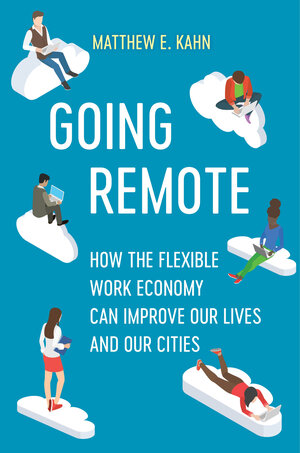By Matthew E. Kahn, author of Going Remote: How the Flexible Work Economy Can Improve Our Lives and Our Cities
Before the COVID Shock, urban economists told a familiar “tale of two cities.” The post-industrial cities such as Baltimore and Detroit continued to lose people because these cities had de-industrialized and had not found a new “golden goose” to replace defunct manufacturing firms. Such cities had overbuilt durable housing in the boom years of the 1950s and 1960s. By 2019, this durable creaky housing actually acted as a poverty magnet because rents were low in depressed cities.
At the same time that these cities and many of their local residents were suffering, urban economists hailed Superstar Cities like Boston, New York City and Silicon Valley. These cities were home to America’s most productive firms. Such cities attracted the smartest and most ambitious workers —a selection effect— and their close physical proximity facilitated learning and trade, which further boosted their productivity. These cities also featured sky high pay and very high rents, in part due to local regulations limiting the ability of real estate developers to build new housing.
Back in 2019 a clear spatial inequity was apparent. Baltimore’s economy was too cold and New York City’s economy was too hot.
A “silver lining” of the 2020 COVID shock is that we have run a society-wide experiment with work-from-home policies (WFH). Millions of educated WFH workers have learned that they can be both productive and happy only going to the office two days a week or less. These workers are effectively untethered from their place of work and now have greater freedom over where they choose to live and how they structure their days. They also have the flexibility to tend to a sick parent or take care of a child and still do their job.
My new book Going Remote tells a new “tale of two cities” as I explore how persistent WFH will affect quality of life and economic opportunity in cities from New York City to Baltimore.
In the case of Manhattan at the start of 2023, for example, there is deep concern that the durable and expensive commercial real estate towers that have been home to many of America’s great firms will experience rising vacancy and declining rents. One recent economics paper on the situation uses the word “Apocalypse” in its title!
Walk along Park Avenue in Manhattan just north of Grand Central Station and from 48th Street you’ll see elegant high rise commercial real estate towers for blocks. As aggregate demand for this real estate declines, urban economics offers several predictions. In the short run, the owners of these towers will collect less commercial real estate revenue from tenants. But every shock has unintended consequences. At a cost, these owners can convert commercial real estate into residential real estate. As such conversions take place, NYC rents will decline and this will help to improve the city’s middle-class quality of life. The city’s population will become younger. As more workers have a WFH option, the city will attract those who really want to live there rather than those who live there in order to have a short commute.
Urban economists are right to worry about a shrinking NYC tax revenue base, but I believe that this concern actually creates a medium-term imperative for such cities to experiment with new cost-effective strategies for improving local quality of life. The mayor of a city with good public schools, street safety, green amenities and good service provision can sleep well at night knowing that WFH workers will want to live in such an area. In this case, the pursuit of improving quality of life is an economic growth strategy!
Cities such as Baltimore, MD and Buffalo NY represent the mirror opposite of NYC. They represent potential destinations for footloose WFH workers. These cities feature cheap housing and are proximate to water and beauty. Baltimore is also only 40 miles from Washington, DC and 100 miles from Philadelphia, with easy train access to both cities. In the recent past, highly educated Power Couples sought out living in a major city to allow both to pursue their careers. In a WFH/hybrid economy, such couples can live in a city such as Baltimore while working at a destination somewhere along the Amtrack Northeast Corridor.
This example also highlights how WFH could improve local diversity. Baltimore is a majority African-American city and its culture and vitality is attractive to many people with roots in the area. In the past, Baltimore’s weak private sector job base led many people to move away from the area. In a WFH economy, those who find the area to be attractive can live there and work along the regional corridor. As cities such as Baltimore attract upper-middle class WFH workers, local rents and the tax base will increase. This “new new geography of opportunity” will spread out across the U.S. A fairer nation will emerge.

